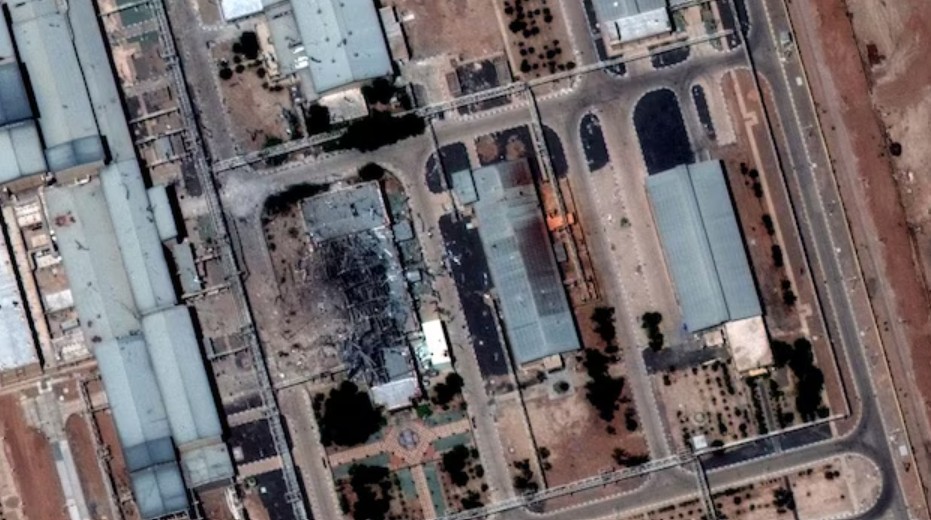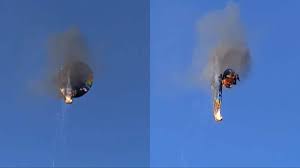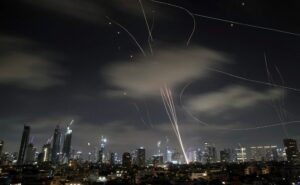Iran’s Uranium Gambit: Did Tehran Outsmart U.S. Airstrikes on Its Nuclear Sites?
6 min read
New Delhi, June 23, 2025 — In a dramatic escalation of tensions in the Middle East, recent U.S. airstrikes targeting Iran’s key nuclear facilities, Fordow, Natanz, and Isfahan, have raised critical questions about the effectiveness of the operation and Iran’s strategic foresight. U.S. President Donald Trump claimed the strikes “completely obliterated” Iran’s nuclear capabilities, but emerging reports suggest Iran may have preemptively relocated a significant stockpile of highly enriched uranium, potentially undermining the operation’s success. Here’s a detailed breakdown of the unfolding situation and its implications for global security.
Background: A Decades-Long Nuclear Standoff
Iran’s nuclear program has been a contentious issue since the 1950s, initially supported by the U.S. under a pro-Western monarchy. Following the 1979 Islamic Revolution, Iran pivoted to Russia and China for nuclear technology, raising concerns about its intentions. The 2015 Joint Comprehensive Plan of Action (JCPOA) aimed to curb Iran’s nuclear ambitions in exchange for sanctions relief, but the deal collapsed in 2018 when the U.S., under then-President Trump, withdrew unilaterally. Since then, Iran has accelerated uranium enrichment, reaching levels close to weapons-grade, prompting heightened scrutiny from the International Atomic Energy Agency (IAEA) and alarm from Israel and Western allies.
The current conflict intensified on June 13, 2025, when Israel launched airstrikes on Iranian nuclear and military sites, citing an imminent nuclear threat. The U.S., initially hesitant, joined the fray on June 20, deploying its formidable B-2 stealth bombers and Tomahawk missiles in a coordinated operation dubbed “Operation Midnight Hammer.” The strikes targeted Fordow, a deeply buried uranium enrichment facility; Natanz, Iran’s largest enrichment site; and Isfahan, a key nuclear research complex.
The Airstrikes: A Bold Move with Uncertain Outcomes
What Happened?
On June 20, 2025, the U.S. military executed precision strikes on three of Iran’s nuclear facilities:
- Fordow: Located 100 kilometers south of Tehran, this fortified facility, buried 80-90 meters under a mountain, is Iran’s most secure enrichment site. Seven B-2 stealth bombers dropped 14 GBU-57 Massive Ordnance Penetrator (MOP) bombs, each weighing 30,000 pounds, designed to penetrate deep underground targets.
- Natanz: Situated 250 kilometers south of Tehran, Natanz is Iran’s primary uranium enrichment hub, housing thousands of centrifuges. It was struck by additional MOP bombs, following earlier Israeli attacks that damaged its aboveground infrastructure.
- Isfahan: A nuclear research complex in central Iran, Isfahan was targeted with over two dozen Tomahawk cruise missiles launched from a U.S. Navy submarine, hitting buildings and tunnel entrances used for uranium storage.
President Trump announced the strikes on his Truth Social platform, claiming a “spectacular military success” that “completely obliterated” Iran’s nuclear enrichment capabilities. However, initial assessments and subsequent reports paint a more complex picture.
Iran’s Preemptive Move: The Missing Uranium
Satellite imagery from Maxar Technologies, captured on June 19 and 20, revealed unusual activity at Fordow, including 16 cargo trucks and bulldozers near the facility’s tunnel entrance. Iranian state media later claimed that key nuclear sites were evacuated, and enriched uranium was moved to a “safe location” before the U.S. strikes. Two Israeli officials, cited by The New York Times, confirmed that Iran relocated approximately 400 kilograms of uranium enriched to 60% purity, close to the 90% threshold for weapons-grade material. This stockpile, if further enriched, could theoretically produce multiple nuclear warheads.
The IAEA, the U.N.’s nuclear watchdog, has been unable to verify the current location of this uranium, raising concerns about Iran’s ability to continue its nuclear program covertly. IAEA Director General Rafael Grossi noted that while no off-site radiation was detected post-strikes, the extent of underground damage at Fordow remains unclear due to limited access. Iran’s Atomic Energy Organization (AEOI) insists that its nuclear infrastructure remains functional and that the strikes caused only “superficial” damage.
U.S. and Iranian Perspectives
U.S. officials, including Vice President JD Vance and Defense Secretary Pete Hegseth, have tempered Trump’s claims of total destruction. At a Pentagon briefing, Joint Chiefs Chairman Gen. Dan Caine described “severe damage” to the targeted sites but cautioned that a full battle damage assessment is ongoing. Vance, speaking on ABC News, acknowledged the uncertainty surrounding the uranium stockpile’s whereabouts, emphasizing the need for diplomatic engagement to address the issue.
Iran, meanwhile, has condemned the strikes as “lawless” and vowed to continue its nuclear activities. Foreign Minister Abbas Araghchi declared that diplomacy is no longer viable, accusing the U.S. of aligning with Israel’s “criminal” agenda. Iranian lawmaker Mohammad Manan Raisi, representing Qom (near Fordow), dismissed Trump’s claims, asserting that the damage was “fully restorable.”
Why It Matters: Global and Regional Implications
The U.S. strikes mark a significant escalation in the Israel-Iran conflict, drawing Washington directly into a war Trump had previously vowed to avoid. The operation’s partial success—coupled with Iran’s apparent relocation of its uranium—raises several critical concerns:
- Nuclear Proliferation Risk: The missing 400 kilograms of enriched uranium could enable Iran to pursue nuclear weapons at a covert facility, potentially shortening the timeline to produce a bomb. Experts estimate Iran could enrich this stockpile to weapons-grade levels in weeks, though building a deliverable nuclear weapon might take months to a year.
- Regional Instability: Iran’s pledge to retaliate, demonstrated by ballistic missile attacks on Israel on June 22, heightens the risk of a broader conflict. The involvement of U.S. forces has strained relations with other regional players, with Pakistan condemning the strikes and the U.N. warning of a “dangerous escalation.”
- Diplomatic Fallout: The strikes have derailed ongoing U.S.-Iran nuclear talks, which aimed to revive elements of the JCPOA. Iran’s refusal to cooperate with IAEA inspectors further complicates efforts to monitor its nuclear activities, potentially undermining global non-proliferation efforts.
- Strategic Uncertainty: The fortified nature of Fordow, combined with Iran’s preemptive actions, suggests that military strikes alone may not neutralize Iran’s nuclear ambitions. As Matthew Savill of the Royal United Services Institute noted, the operation’s success at Fordow is “not immediately apparent” due to its deep underground construction.
What’s Next?
The U.S. and Israel are now focused on locating Iran’s relocated uranium stockpile, with intelligence agencies intensifying surveillance efforts. The IAEA has called for renewed access to Iran’s nuclear sites to assess damage and verify compliance with the Non-Proliferation Treaty. Meanwhile, Iran’s threats of “regrettable responses” and its history of asymmetric warfare, such as proxy attacks via groups like Hezbollah, raise fears of retaliatory strikes against U.S. or Israeli targets.
President Trump has warned of further military action if Iran does not pursue peace, while Vice President Vance has stressed a dual approach of diplomacy and pressure. Israeli Prime Minister Benjamin Netanyahu hailed the strikes as a “history-changing” blow to Iran’s nuclear program, but domestic critics, including U.S. congressional Democrats, argue that the operation lacked authorization and risks entangling the U.S. in a protracted conflict.
For Indian Readers: Why This Matters to India
India, with its strategic interests in the Middle East and a history of balancing relations with both Iran and the U.S., faces complex challenges. Iran is a key supplier of crude oil to India, and any escalation could disrupt energy markets, impacting India’s economy. Additionally, India’s commitment to nuclear non-proliferation aligns with global efforts to prevent Iran from acquiring nuclear weapons, but New Delhi has historically advocated for diplomatic solutions over military action. The Indian government has yet to comment officially on the U.S. strikes, but analysts expect India to push for de-escalation to safeguard regional stability and its economic interests.
Conclusion
The U.S. airstrikes on Iran’s nuclear facilities represent a high-stakes gamble to curb Tehran’s nuclear ambitions, but Iran’s apparent relocation of its uranium stockpile suggests a strategic miscalculation. As the world awaits clarity on the strikes’ impact and the fate of Iran’s nuclear program, the risk of further escalation looms large. For now, the international community, including India, watches closely as the U.S., Israel, and Iran navigate this precarious standoff.







